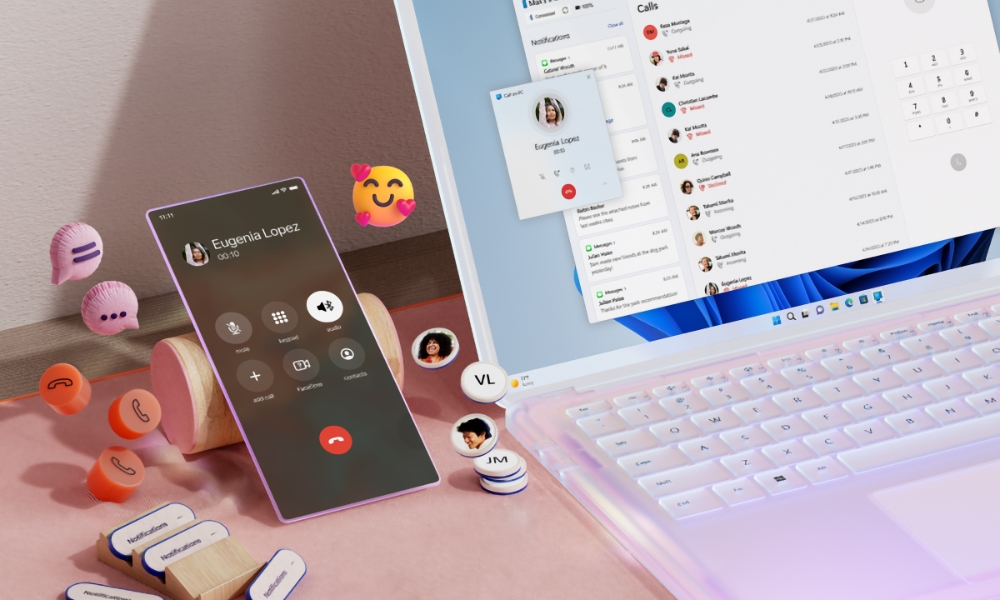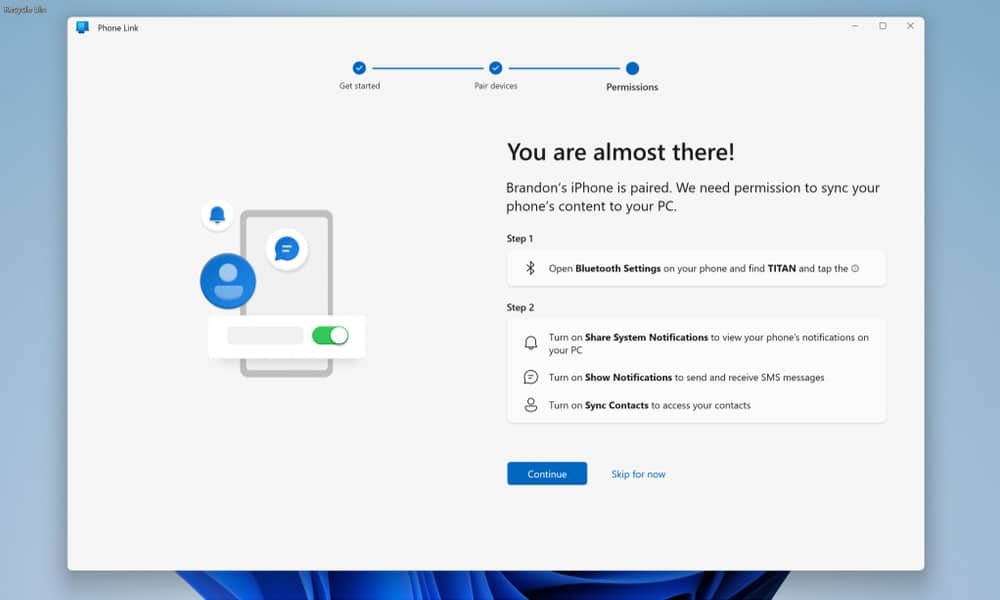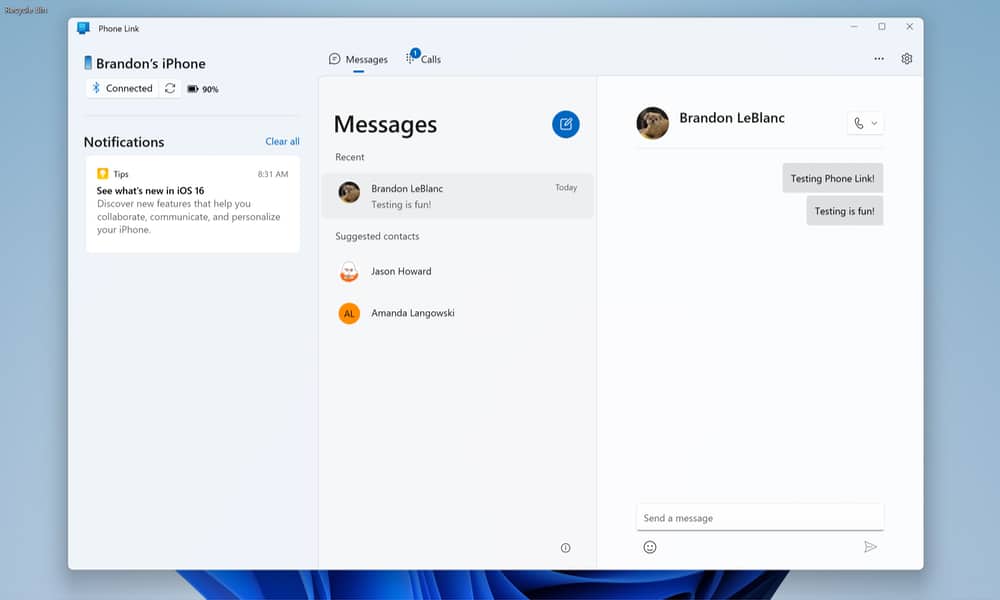Microsoft Releases New App to Send and Receive iMessages on Windows (Sort Of)
 Credit: Microsoft
Credit: Microsoft
Toggle Dark Mode
Microsoft has just begun rolling out an updated version of its Phone Link tool that adds support for the iPhone — including the ability to send and receive messages from PCs running Windows 11.
This is the same app that showed up as an early preview release in February. That version was effectively a “beta” made available only to select Windows Insiders. Today’s release opens it to all.
Before you get too excited, though, there are quite a few limitations to how this works. So, while it’s true you will be able to send and receive iMessages and SMS/MMS messages through your iPhone from your Windows PC, that’s pretty much the entire extent of what this app allows.
Put simply, it’s not even close to the fully integrated experience of using Apple’s Messages app on a Mac. That’s because Apple isn’t about to let third-party apps play in its iMessage sandbox, so only Apple’s apps and devices can talk to the iMessage servers. Everybody else is left to figure things out on their own.
While life would be wonderful if Apple would release iMessage for other platforms, it sounds like it will be an ice age in Cupertino before that happens. Apple knows that iMessage amounts to serious lock-in that keeps people using its products — and buying more of them for their kids and other family members.
How Microsoft’s Phone Link Works with iMessage
Microsoft’s Phone Link isn’t a new app; it’s been available to help Windows users sync with Android for several years, but this is the first time it’s welcomed iPhone users into the fold.
The iPhone support mimics what folks have been able to do with Android handsets for a while, including receiving notifications on your desktop, placing and receiving calls via Bluetooth, accessing contacts, and sending and receiving text messages. Transferring photos is also supported, but that works via iCloud integration in the Windows 11 Photos app rather than transferring pictures directly from your iPhone to your PC.
While that last point may have you wondering how Microsoft has managed to tunnel its way into Apple’s walled garden, the answer is actually simpler than you’d expect: Microsoft is walking through a gate that Apple had made available for years.
As much as Apple likes to control things, it has to make allowances for industry-standard communication features that people expect from their phones. For instance, nobody would want an iPhone if it couldn’t connect to a car’s Bluetooth system to make hands-free calls. Likewise, even though Apple’s AirPods offer some pretty slick integration with the iPhone, at heart, they’re still just a pair of Bluetooth headphones.
Along the same lines, the iPhone supports a standard known as the Bluetooth Message Access Profile (MAP). It’s this extension to the Bluetooth protocol that lets text messages from your phone appear on your car dashboard even when you don’t have CarPlay.
Support for this feature goes all the way back to 2012 when iOS 6 was released, and it’s been available for every model since the iPhone 4. Apple actually beat Google to this since Bluetooth MAP didn’t come to Android until Android 4.4 “KitKat” debuted in 2013.
Needless to say, this isn’t a feature that Apple is likely to abandon any time soon, and although it’s most commonly used in cars, there’s also nothing in the Bluetooth spec that says MAP can be used only with in-car systems.
Hence, Bluetooth MAP provides a path into the iPhone messaging system, but it’s a pretty narrow one. Only the most basic messaging features are supported.
For one, Microsoft’s Phone Link can’t distinguish between an iMessage or an old-school SMS text message. It sees everything that comes from the iPhone as merely a “message” and displays them all in grey bubbles. There’s also no support for group chats or rich media, which is understandable if you think about what you’d typically see on a car’s dashboard.
There’s also no synchronization or downloading of messages from your iPhone to your Windows PC. Messages that come in while your iPhone is in Bluetooth proximity will appear on your computer, but those that show up while you’re out of range will remain on your iPhone. These are all known limitations of Bluetooth MAP, which is designed only for transmitting messages to another device as soon as they’re received.
Oddly, although Bluetooth MAP has been around on the iPhone since iOS 6, Microsoft notes that Phone Link requires an iPhone running iOS 14 or later. However, this is a general compatibility requirement for the Phone Link app as a whole, and it’s possible some of the other features may be dependent on iOS 14.








